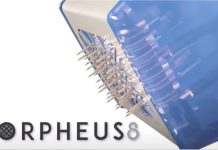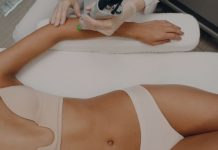The US Food and Drug Administration (FDA) on Wednesday issued another update on the Renuvion/J-Plasma device system by Apyx Medical, this time regarding use after liposuction.
The Renuvion/J-Plasma system includes a handpiece and plasma generator. The system uses radiofrequency (RF) energy and helium to generate plasma.
The FDA announced that on April 27 it had cleared the Renuvion APR handpiece for “coagulation of subcutaneous soft tissues following liposuction for aesthetic body contouring.” Detailed instructions and safety information specific to this use will come in the labeling and training for this handpiece, according to the statement.
This update follows the following updates in 2022:
- March: The FDA warned against the use of Renuvion/J-Plasma for dermal resurfacing (to treat wrinkles) or skin contraction (a procedure under the skin performed alone or with liposuction to achieve skin effects, such as tightening). At that time, the Renuvion/J-Plasma device system was cleared by the FDA for “general use of cutting, coagulation, and ablation of soft tissue during open and laparoscopic surgical procedures,” and had not been deemed safe or effective for any aesthetic skin procedures.
- June: The FDA announced that a new handpiece for the Renuvion/J-Plasma device system had been cleared for use in “certain dermal resurfacing procedures. The new handpiece, the Renuvion Dermal Handpiece, was cleared on May 25, 2022, for the treatment of “moderate to severe wrinkles and rhytides, limited to patients with Fitzpatrick Skin Types I, II or III.” The announcement pointed out that this handpiece is separate from Renuvion/J-Plasma handpieces cleared for cutting, coagulation, and ablation of soft tissue during open and laparoscopic surgical procedures.
- July: The FDA announced the clearance of a Renuvion/J-Plasma handpiece that can be “used under the skin in certain procedures intended to improve the appearance of loose skin.” The Renuvion APR Handpiece was cleared for use in subcutaneous dermatologic and aesthetic procedures to improve the appearance of lax skin in the neck and submenta region on July 15, 2022.
In the new statement, the FDA offered advice for healthcare providers and consumers regarding the latest update. For clinicians, the agency recommends telling patients undergoing an aesthetic procedure which devices they plan to use and to “read and carefully follow instructions and training for the Renuvion/J-Plasma system and handpieces as they include important safety information.” The FDA also advises healthcare providers to “be aware of the current indications for the Renuvion APR Handpiece,” which are:
- Delivering radiofrequency energy and/or helium plasma where coagulation/contraction of soft tissue is needed. Soft tissue includes subcutaneous tissue.
- Coagulation of subcutaneous soft tissues after liposuction for aesthetic body contouring.
- For use in subcutaneous dermatologic and aesthetic procedures to improve the appearance of loose skin in the neck and submental region.
- For delivering radiofrequency energy and/or helium plasma for cutting, coagulation, and ablation of soft tissue during open surgical procedures.
- For use with compatible electrosurgical generators owned by Apyx Medical.
The statement also points out to healthcare professionals that the Renuvion Dermal Handpiece is a separate handpiece that is indicated for the treatment of moderate to severe wrinkles and rhytides in patients with Fitzpatrick Skin Types I, II, or III.
For consumers, the FDA statement recommends discussing the benefits and risks of all skin procedures with their healthcare professional, and when considering an aesthetic procedure, ask which devices your provider is going to use.
Additionally, the guidance encourages consumers who believe they have experienced a problem with a device to report the problem to the FDA through the MedWatch Voluntary Reporting Form.
Marcia Frellick is a freelance journalist based in Chicago. She has previously written for the Chicago Tribune, Science News, and Nurse.com, and was an editor at the Chicago Sun-Times, the Cincinnati Enquirer, and the St. Cloud (Minnesota) Times. Follow her on Twitter at @mfrellick






